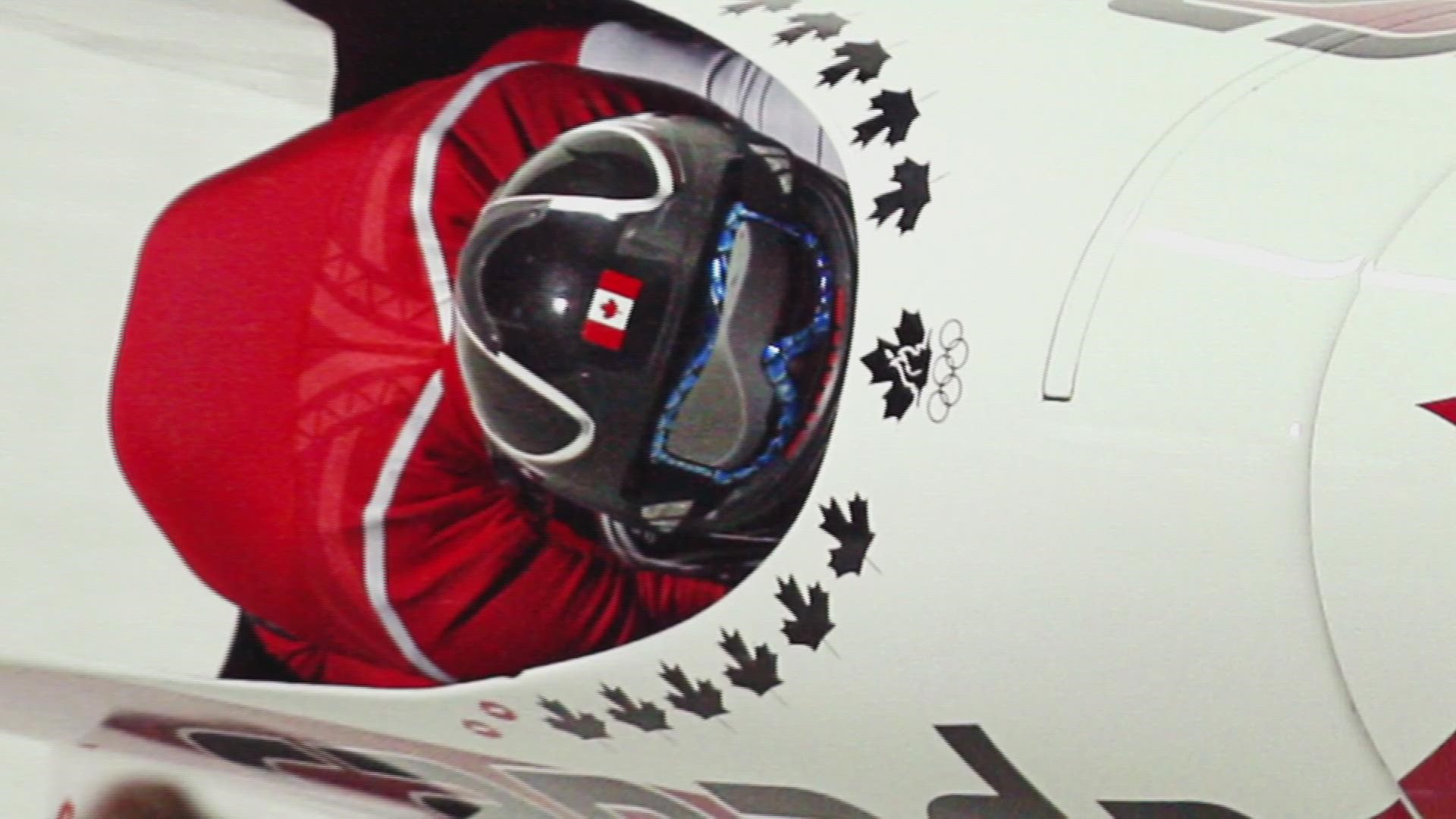BEIJING, China — Fast sleds and ice.
We can start there when talking about these Winter Olympic sports. But the bobsled, monobob, skeleton and luge use different sleds and have different rules. Here's a breakdown:
What is Bobsled?
Bobsled is similar to racing cars, according to Team USA's website, only it’s on ice and there’s only one sled on a course at a time.
There are three disciplines in bobsled: men’s two-man bobsled, women’s bobsled and men’s four-man bobsled.
Women's and two-man sleds include a pilot and a brakeman. For the four-man, there are four athletes: a driver who steers the bobsled down the track, two crewmen who help push the sled at the beginning of the race, and a brakeman who pulls the brakes and stops the sled at the end of the race. The brakeman and push athletes act as the engine at the start, and have the important job of giving the sled velocity from the top. These athletes must then gracefully load into the sled and ride as relaxed as possible in a bent position to keep the sled in balance and aerodynamic.
And, yes, Jamaica has a bobsled team.
What is the Monobob?
Women’s monobob is one of seven new events at this year’s Winter Games.
Monobob is a single competitor doing all of the work, according to Team USA, from pushing at the start to driving and braking over the icy course.
Previously, the two-woman competition was the only bobsled event for females, while men have had the two- and four-man races. The International Olympic Committee added monobob as a second event for women in this Olympic cycle, giving both genders two medal events, according to Team USA.
RELATED: Elana Meyers Taylor cleared to compete at Winter Olympics following second negative COVID test
What is the Skeleton?
Skeleton sleds don’t have an engine, brakes or a seat belt, according to Team USA's website. Instead, athletes must power the 75- to 100-pound sled off the starting block by sprinting in a bent-over position, which requires strength, power and speed.
Women and men compete in the sport of skeleton from the same starting point on the track. The only difference between the two disciplines is the weight of the sled.
What is luge?
Luge, according to the Olympics organization, is a timing-based race in which an athlete lies down face up on a sled and slides at incredible speeds through a predefined course.
The luger with the fastest cumulative time is deemed the winner.
Luge has four categories - men’s singles, women’s singles, doubles and team relay. There is no specific rule stating that athletes of the same gender must compete in the doubles.
Glossary of terms
According to NBCOlympics.com:
Brakeman: The last passenger in the bobsled. The last person to enter the sled at the start. Known as the brakeman because he or she is responsible for pulling the brake to stop the sled at the end of the run.
Chicane: A sequence of tight serpentine curves.
Cowling: Another name for the hull of the bobsled.
Driver: The person who sits in the front bobsled and controls its path. Usually, the first person to enter the sled at the start. Also known as a pilot.
IBSF: The international governing body of skeleton and bobsled. Stands for "International Bobsleigh and Skeleton Federation.” Formally the FIBT (Federation Internationale de Bobsleigh et de Tobogganing).
G-Force: Short for gravitational force, it is the force caused by an acceleration equal to the acceleration caused by gravity. In bobsled, the strongest G-forces are generated going around severe turns. Athletes can feel a force of several “Gs” coming around the sharp, banked turns.
Kreisel: German for circle; a curve that forms a circle by having the track cross itself.
Heat: A single run down a bobsled track during a race. A race is generally made up of two or more heats. All Olympic bobsled races are four heats. Also known as a run.
High Line: A route that takes the sled close to the top lip of a turn.
Labryinth: A combination of small curves on a track with little or no straightaway between them; a labyrinth usually consists of three to four curves.
Line: The route a sled takes down the track.
Low Line: A route that takes a sled closer to the lower edge of the track around a turn.
Loading: When the athletes enter the sled after the push start.
Omega Curve: From above, the curves resembles the Greek letter Omega ().
Pilot: Another term for driver.
Push Athlete: In a four-man sled, one of the two athletes in the middle of the sled.
Runners: The solid pieces of steel on which the sled rides.
Olympics
The Winter Olympics are here! Watch some of our YouTube content featuring athletes and stories with unique Arizona connections. Subscribe to the 12 News YouTube channel for updates.

